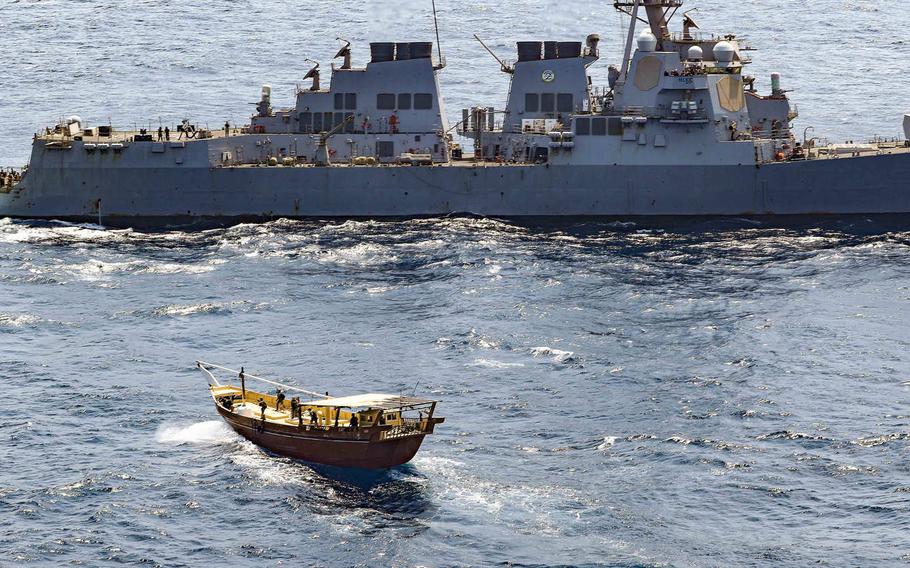Houthis Fire Anti-Ship Missile at USS Laboon – HEATHER MONGILIO JANUARY 14, 2024 11:17 PM
U.S. fighter aircraft shot down an anti-ship cruise missile the Houthis fired toward USS Laboon (DDG-58), U.S. Central Command announced Sunday night.
Central Command’s release did not specify the aircraft that shot down the missile or the military branch. The fighter aircraft shot down the missile off the coast of Al-Hudaydah, according to the release.
There were no reports of damage or injury following the strike.
The attack on Laboon comes after two days of strikes by the U.S. and the United Kingdom on Houthi targets in Yemen. During the strikes, which involved a number of warships and aircraft, the U.S. and U.K. hit sites that included radar systems, production facilities and munition depots, USNI News previously reported.
The Houthis promised retaliation for the strikes. Yemeni Foreign Minister Hisham Sharaf Abdullah gave the United Nations a letter of protest against the U.S. and U.K. strikes.
Houthi spokesperson Mohammed Abdulsalam took to social media site X to call the strikes a “blatant violation of national sovereignty.”
“On top of the 100 days of Israeli aggression against Gaza, we affirm that the hostile measures by America against Yemen will not prevent the armed forces from continuing to implement their religious, humanitarian and moral commitment in support of the Palestinian people and their valiant resistance by continuing to target ships belonging to the enemy entity and heading to the ports of occupied Palestine until the aggression stops and the siege on Gaza,” Abdulsalam said on X.
from Blogger https://ift.tt/sWec1N0
via IFTTT






















